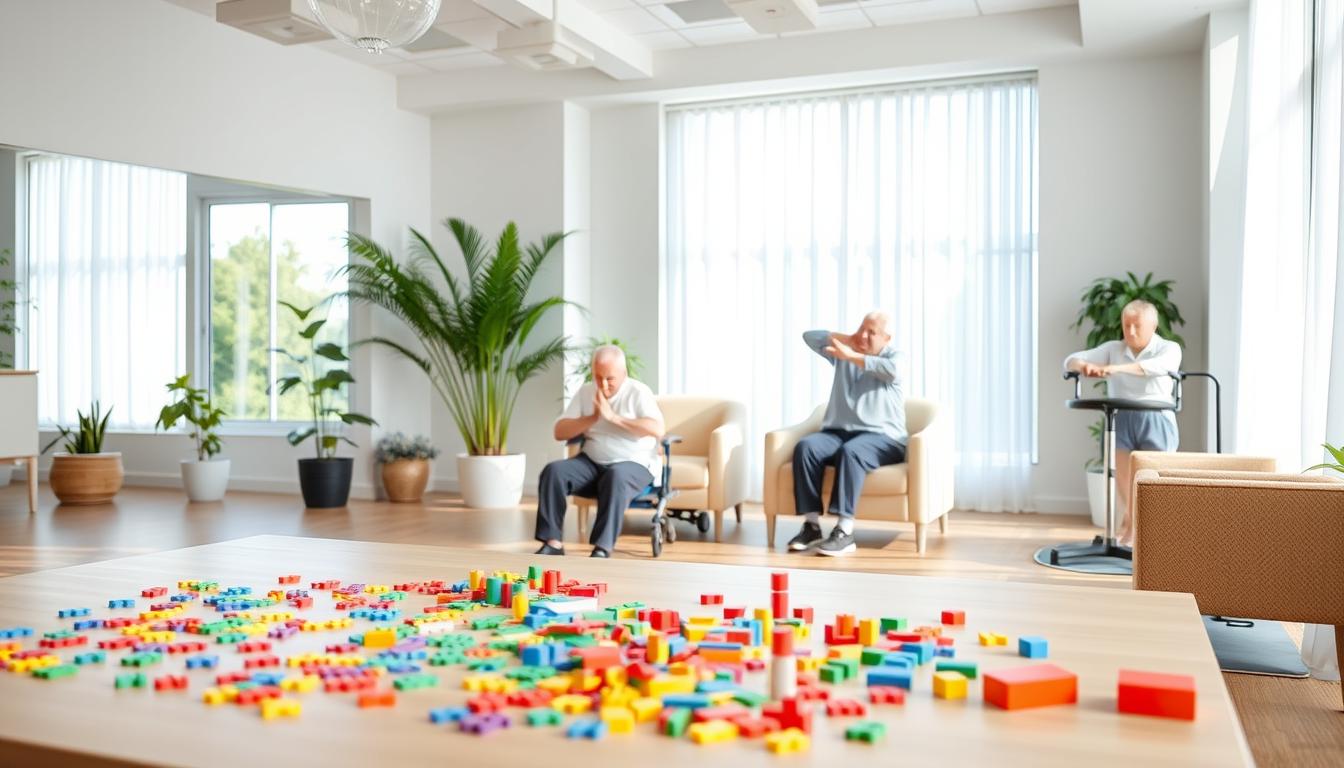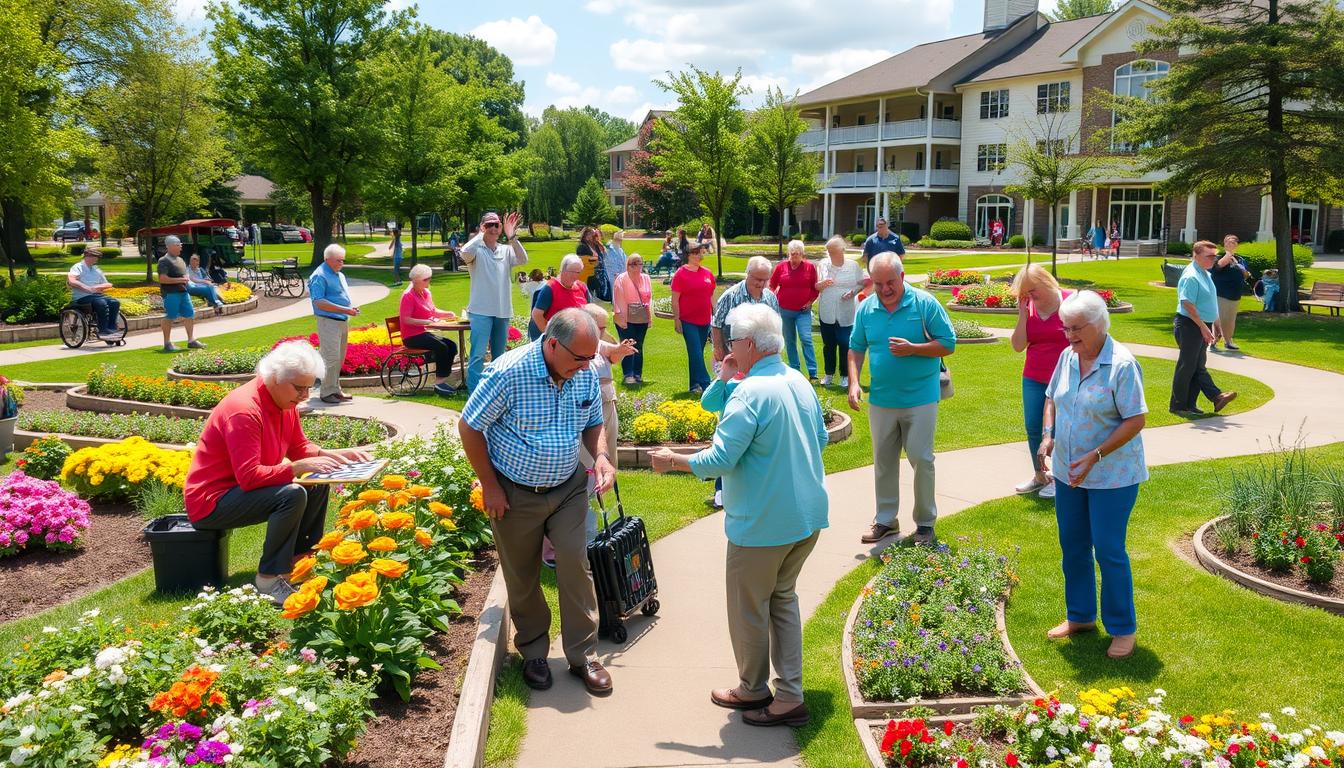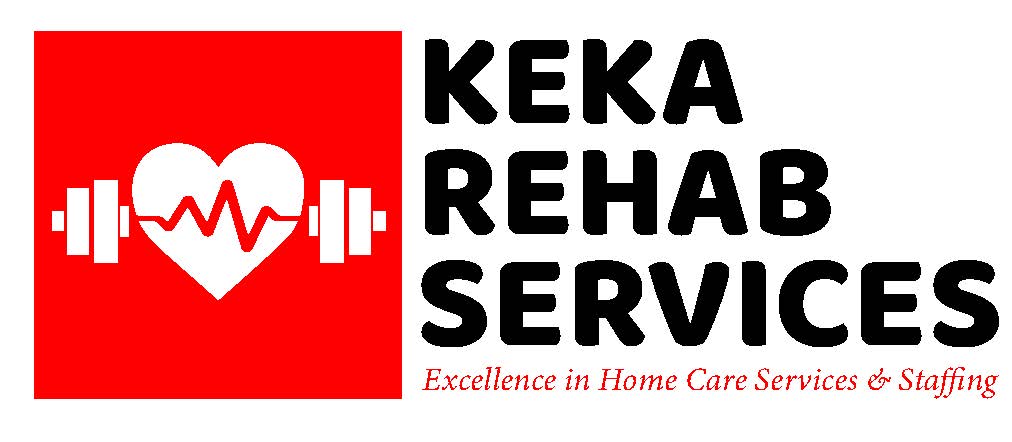Did you know 90% of older adults want to stay in their homes? But many struggle after injuries or illnesses. Research-driven senior rehab is changing this. It uses evidence-based methods to help seniors recover better.
The evidence-based treatment uses the latest science to help people get better. It makes seniors healthier and happier. This method makes recovery plans fit each person’s needs and goals.
This kind of rehab does more than fix physical problems. It also helps with thinking, feeling, and living better. Geriatric physical therapy helps seniors move better, balance, and avoid falls. This is key to staying independent as we get older.
Key Takeaways
- Evidence-based rehabilitation improves outcomes for seniors
- Research-driven approaches can increase functional recovery by 25%
- Personalized therapy plans are crucial for effective senior rehab
- Geriatric physical therapy addresses mobility, balance, and fall prevention
- Evidence-based practices enhance overall well-being in older adults
Understanding Evidence-Based Rehabilitation for Seniors
Evidence-based rehabilitation helps seniors move better and feel better. It uses methods that have been proven to work. A study looked at 127 articles on different types of rehabilitation.
Wellness programs for older adults use these methods to improve physical and mental health. The research has found that 15 studies have shown that these practices work well for older drivers.
Key parts of this rehabilitation include:
- Personalized assessment and goal setting
- Targeted physical exercises to improve strength and balance
- Cognitive training to enhance mental sharpness
- Adaptive strategies for daily living activities
This approach helps seniors stay independent and live better lives. It keeps getting better as new research comes in. This helps seniors move better and enjoy life more.
Research-Driven Senior Rehab: Core Principles and Practices
Senior rehab now uses science to help people recover. It focuses on helping elders after surgery and improving their minds, which are big parts of the field.
Goal-Oriented Therapy Approaches
Goal-oriented therapy is very important in senior rehab. It tailors treatment to each person’s needs and dreams. For example, a grandma might want to improve her mobility so that she can play with her grandkids.
Motivational Enhancement Techniques
Motivation is key to success in rehab. Therapists use many methods to keep seniors excited about getting better. They set goals, celebrate small wins, and involve the family.
Studies show 28-34% of people aged 65 to 74 don’t move much. This shows how important staying motivated is in senior rehab.
Personalized Recovery Pathways
Every senior’s path to improvement is different. Personalized plans, which consider factors like how well seniors think and move and who supports them, are essential.
By 2040, 21.6% of the U.S. will be older adults. Doctors and therapists work hard to give the best care. About 45% work in hospitals and 28% in clinics.
Using these key ideas, senior rehab aims to help elders recover from surgery and improve their minds. This way, every senior gets cthe are that works for them.
The Science Behind Enhanced Medical Rehabilitation
Senior rehab has made big steps forward. A study showed how good therapy can help seniors get better faster.
Clinical Research Findings
A study with 229 seniors in nursing homes found great results. Those who received better therapy got 25% better than others.
The study was in St. Louis. It showed that positive messages in therapy help.
Outcome Measurements
Researchers examined the effectiveness of the therapy. They used the Barthel Index to measure how independent seniors became. EMR helped seniors score 35 points better than standard care.
Walking speed also got better. EMR helped seniors walk 0.38 meters/second. Standard care helped them walk 0.22 meters/second.
Recovery Rate Improvements
The six-minute walk test showed significant gains. EMR helped seniors walk 266 feet. Standard care helped them walk 94 feet.
Therapists used 24 positive messages per session, which increased seniors’ activity. EMR patients were active 52.5% of the time, and standard care patients were active 41.2% of the time.
This shows how vital good therapy is for seniors.
Assessment of Rehabilitation Potential in Older Adults
Checking if older adults can get better is very important. It helps figure out if they can get better with exceptional help. This helps make it easier for them to move around.
Multi-Disciplinary Evaluation Process
Many healthcare experts work together to determine whether older adults can get better. This teamwork ensures that they check everything.
In a study, 6 staff members checked 26 patients. They used a unique Rehabilitation Potential Assessment Tool (RePAT) tool. It took them an average of 32.7 minutes.
Functional Capacity Assessment
Knowing what someone can do right now is important. This helps create a good plan for improving. The Functional Independence Measure (FIM) is used frequently in 96.8% of places.
Other tests include grip strength and a 10-meter walk test. These are used in 32.3% and 9.7% of cases, respectively.
Patient-Centered Goal Setting
Setting achievable goals is key to improving. Doctors and therapists consider what the patient wants and can do. A study showed that 32% of patients were slightly frail, and 42% were more frail.
This affects the goals set and the treatment plans. It’s all about helping older adults get better.
There’s always more research being done. A recent review included 49 articles. Most of these studies were from North America and Europe.
Implementing Post-Acute Recovery Programs
Post-operative recovery for elders needs careful planning and execution. Many seniors face challenges after hospital stays. About 25% to 35% of older adults lose at least one daily living activity after 10-14 days in the hospital for acute illness. This highlights the importance of effective post-acute care programs.
Ageing wellness programs play a crucial role in recovery. These programs focus on restoring physical function and cognitive abilities. High-intensity home-based rehabilitation (HIHR) has shown promising results. It improves functional independence while cutting costs nearly in half compared to short-term stays in skilled nursing facilities.
Many assisted living facilities offer rehabilitation services. About 83% provide visiting physical therapists, 82% offer occupational therapists, and 79% have speech therapists available. These services help seniors regain their independence after hospital stays.
Implementing post-acute recovery programs requires a team approach. Healthcare providers, therapists, and caregivers collaborate to create personalized recovery plans. These plans address the unique needs of each senior, considering their health status and recovery goals.
Cost-effective solutions are emerging. HIHR programs cost around $3,400 per episode, compared to $6,720 for a 14-day stay in a skilled nursing facility. This makes quality post-operative care more accessible to seniors.
In conclusion, implementing effective post-acute recovery programs is vital for seniors’ well-being. Focusing on personalized care and utilizing cost-effective solutions can improve outcomes and quality of life for older adults recovering from hospital stays.
Cognitive and Physical Rehabilitation Integration
It’s key to mix cognitive and physical therapy for older adults. This helps them fully recover and shows how mind and body are connected, especially for seniors with brain issues.
Memory Enhancement Exercises
Memory games are crucial for brain health. By 2030, 74.7 million people will have dementia worldwide. Computer games have helped improve memory and focus in older adults with mild brain problems.
Physical Mobility Training
Keeping seniors mobile is also crucial. Exercise can help keep the brain sharp and grow brain areas. Special training helps those who have broken their hips get better faster.

Balance and Coordination Activities
Exercises for balance and coordination are key for seniors. They help avoid falls and boost physical skills. Research shows exercise can also boost brain function, especially in thinking and planning.
Combining memory games, physical exercises, and balance activities helps a lot. This mix is excellent for the 40% of hip fracture patients with brain issues. It’s a way to help seniors live better and stay independent despite brain and body challenges.
Role of Motivation in Senior Recovery
Motivation is critical in senior rehab. A study with 350 stroke patients showed that feeling supported and exercising helped them stay motivated. This shows how important a supportive place is for recovery.
Understanding motivation theories is key in senior rehab. Self-determination, social-cognitive, and goal orientation theories are essential. These help therapists meet each senior’s needs and goals.
Studies show motivated patients do better in recovery. This means we need ways to keep seniors motivated. Internal motivation is perfect for lasting success.
Rehab programs often use counsellors or peers for support. They help find reasons for change and keep seniors committed. This makes recovery more engaging and keeps seniors motivated.
Remember, motivation isn’t just about wanting to do it. Getting enough sleep is also key for staying on track. This complete view of motivation is crucial for effective senior rehab programs.
Measuring Rehabilitation Success Metrics
It’s key to track the effectiveness of geriatric physical therapy. The Rehabilitation Measures Database has over 580 tools that help professionals assess patients’ progress.
Functional Independence Measures
The Functional Independence Measure (FIM®) assesses 13 motor and 5 cognitive tasks. Scores range from 18 to 126, giving a full picture of a patient’s progress.
Tests like the Fugl-Meyer Assessment and Box and Block Test are used for upper body function.
Quality of Life Indicators
Quality of life measures consider more than physical health. Special tests are needed for older adults with dementia, and with over 46 million people worldwide living with dementia, these tests help track progress.
Long-term Outcome Tracking
Tracking progress over time is crucial in ageing wellness programs. Studies show promising results from personalized rehab plans. A recent study involved 19 patients who completed three months of exercise.
This research helps make long-term geriatric physical therapy plans better.
Community Integration and Support Systems
It is very important to help seniors connect with their community. This helps them recover better at home and keeps them doing well for a long time.
In rural China, a big study was done. It was at five eldercare centres. They worked on helping seniors feel better and live better lives.

Keeping seniors safe from falls is a big part of helping them. These programs help them stay out of the hospital. They also help them not need to live in nursing homes for a long time.
Studies show that teams working together are the best. A study looked at 74 studies with 6,809 stroke patients. It found that teams of doctors, nurses, and rehab workers did the best.
Social workers provide most of the care for older adults. In Lishui County, China, 18 centers help many seniors, which shows how local help can make a big difference.
Focusing on community help can improve seniors’ lives and save them money. The cost of stroke worldwide is about US $721 billion. Good community programs can help lower these costs and make seniors happier.
Adapting Rehabilitation for Frail Elderly
Rehabilitation for frail seniors requires special care. As we age, our bodies change how they handle exercise and healing, so it’s important to use exercises that fit our age.
Modified Exercise Programs
Many older adults face frailty. About 21% of people over 65 living at home are frail, with more women. For them, regular exercise might be too hard. So, we use exercises that help keep and improve what they can do.
Safety Considerations
It is very important to keep seniors safe. In their rehab, we use strategies to prevent falls. These include balance training, strength exercises, and making their environment safer. Doctors consider many things to determine who will benefit most from rehab.
Progressive Achievement Goals
It’s key to set achievable goals that improve over time. The Frailty Intervention Trial found that a mix of exercises can help. Goals might start with simple things like standing up alone and getting more complex from there.
There is always more research to be done in this area. A study of 49 articles from 1959 to 2017 shows that we’re getting more into rehab for frailty. Changing how we do rehab can help frail seniors stay independent and live better lives.
Conclusion
Research-driven senior rehab is significant for older people’s health. By 2050, over 1.5 billion people will be 65 or older. This means more people will need evidence-based rehabilitation.
In 2019, 53,000 people in the Netherlands received geriatric rehabilitation, which shows the great need for this kind of care.
Seniors get care plans made just for them. These plans consider their age, health, and other issues. The care they get changes based on their health and goals.
This personalized care has made a big difference. It has improved the quality of care for seniors.
Future senior rehab will use more technology. Wearable devices and telehealth services will be very helpful. Family support and follow-up therapy are also necessary.
As we move forward, we must study how patients feel during rehab. This will help make care even better for seniors.
FAQ
What is Enhanced Medical Rehabilitation?
Enhanced Medical Rehabilitation is a therapy method from the Washington University School of Medicine. It sets goals for each patient and provides motivational messages, leading to a 25% better recovery than usual therapy.
How does evidence-based rehabilitation benefit seniors?
It helps seniors by improving their ability to perform daily tasks. It keeps them active and strong, enabling them to live better and do what they love.
What are the core principles of research-driven senior rehab?
It focuses on setting goals and making therapy meaningful. It uses motivational techniques to keep patients engaged, making therapy more effective for each person.
How effective is Enhanced Medical Rehabilitation compared to standard therapy?
A study showed that it is 25% better than usual therapy. It uses motivational messages to help patients reach their goals.
How is rehabilitation potential assessed in older adults?
It’s a detailed process that considers many factors. It includes a team evaluation and setting goals that matter to the patient. The process helps decide who will benefit from therapy.
Why is integrating cognitive and physical rehabilitation important for seniors?
It’s key for a full recovery. It includes exercises for memory, movement, and balance. Even those with big challenges can see improvements in their life.
How does motivation impact senior recovery?
Motivation is critical. Enhanced Medical Rehabilitation makes therapy more engaging, which leads to better patient results.
How is rehabilitation success measured?
Success is measured by how well patients can do things independently. It also considers their quality of life and long-term progress. Tools like the Functional Independence Measure (FIM) help track this.
Why are community integration and support systems critical in senior rehabilitation?
They help keep therapy going at home, which is key for lasting benefits. This also helps avoid going back to the hospital and supports daily life.
How is rehabilitation adapted for frail elderly individuals?
It involves special exercises and safety measures. The goals are achievable. The focus is on keeping what they can do, not just gaining what they lost.
